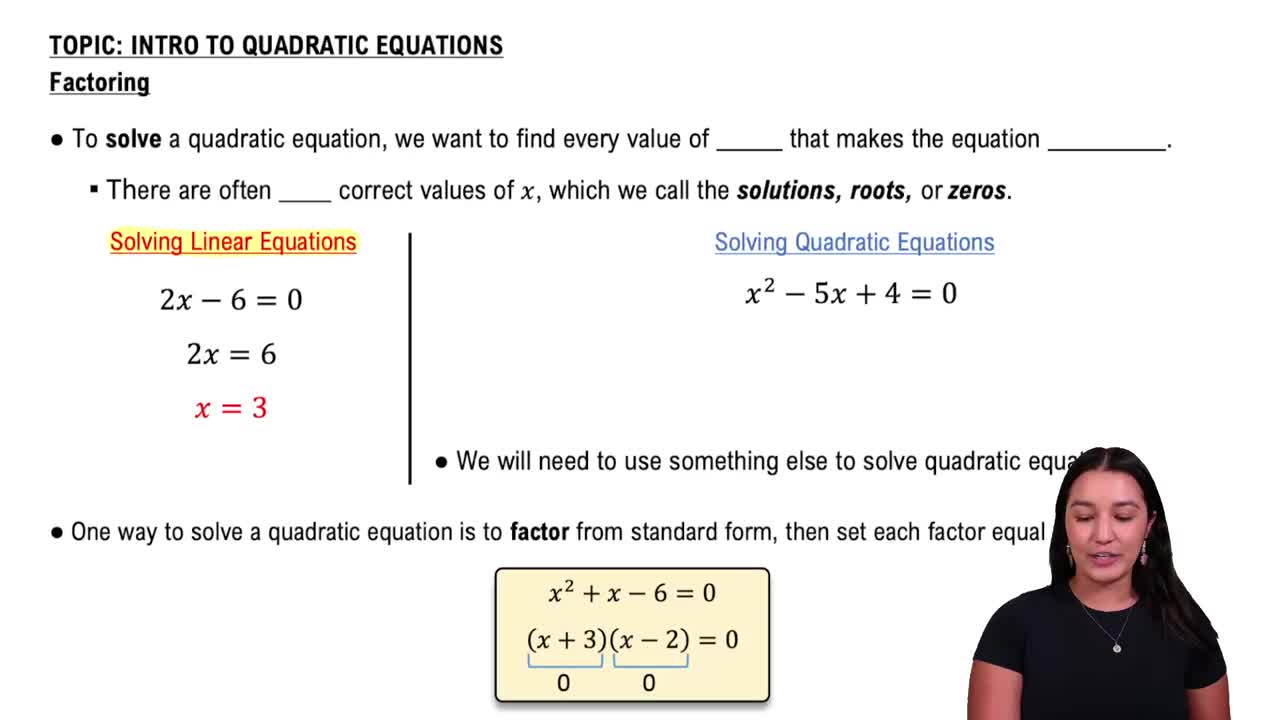Here are the essential concepts you must grasp in order to answer the question correctly.
Consecutive Even Integers
Consecutive even integers are pairs of integers that differ by 2, such as (2, 4) or (6, 8). If 'x' is an even integer, the next consecutive even integer can be expressed as 'x + 2'. Understanding this concept is crucial for setting up equations involving even integers.
Recommended video:
Probability of Multiple Independent Events
Sum of Squares
The sum of squares refers to the operation of squaring each number in a set and then adding those squares together. For example, if 'a' and 'b' are two integers, the sum of their squares is represented as a² + b². This concept is essential for solving the problem, as it allows us to formulate the equation based on the given condition.
Recommended video:
Solving Quadratic Equations by Completing the Square
Solving Quadratic Equations
Quadratic equations are polynomial equations of the form ax² + bx + c = 0. They can be solved using various methods, including factoring, completing the square, or the quadratic formula. In this context, once the equation representing the sum of squares is established, solving it will yield the required integers.
Recommended video:
Solving Quadratic Equations by Factoring
 Verified Solution
Verified Solution



 5:35m
5:35m
